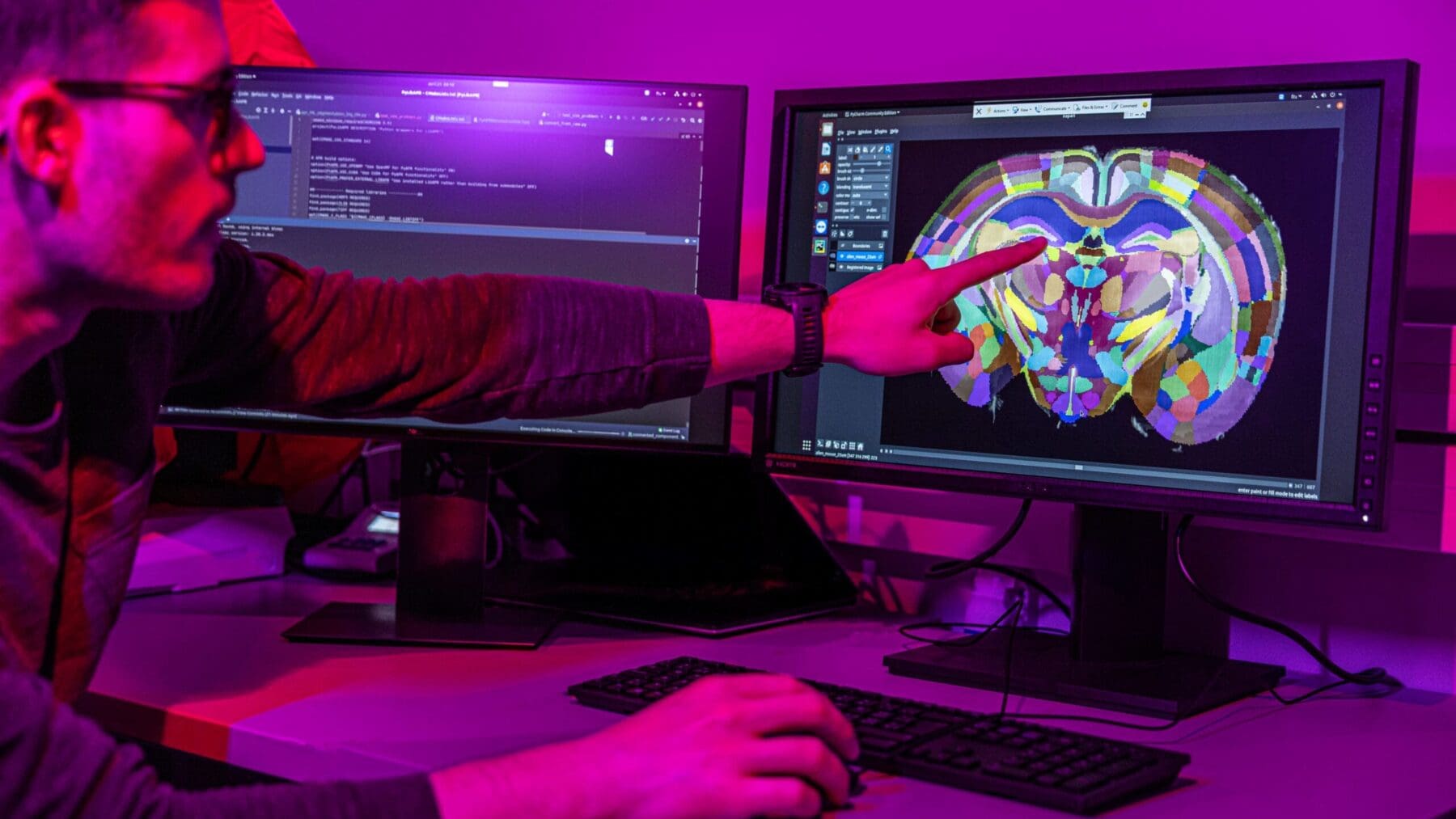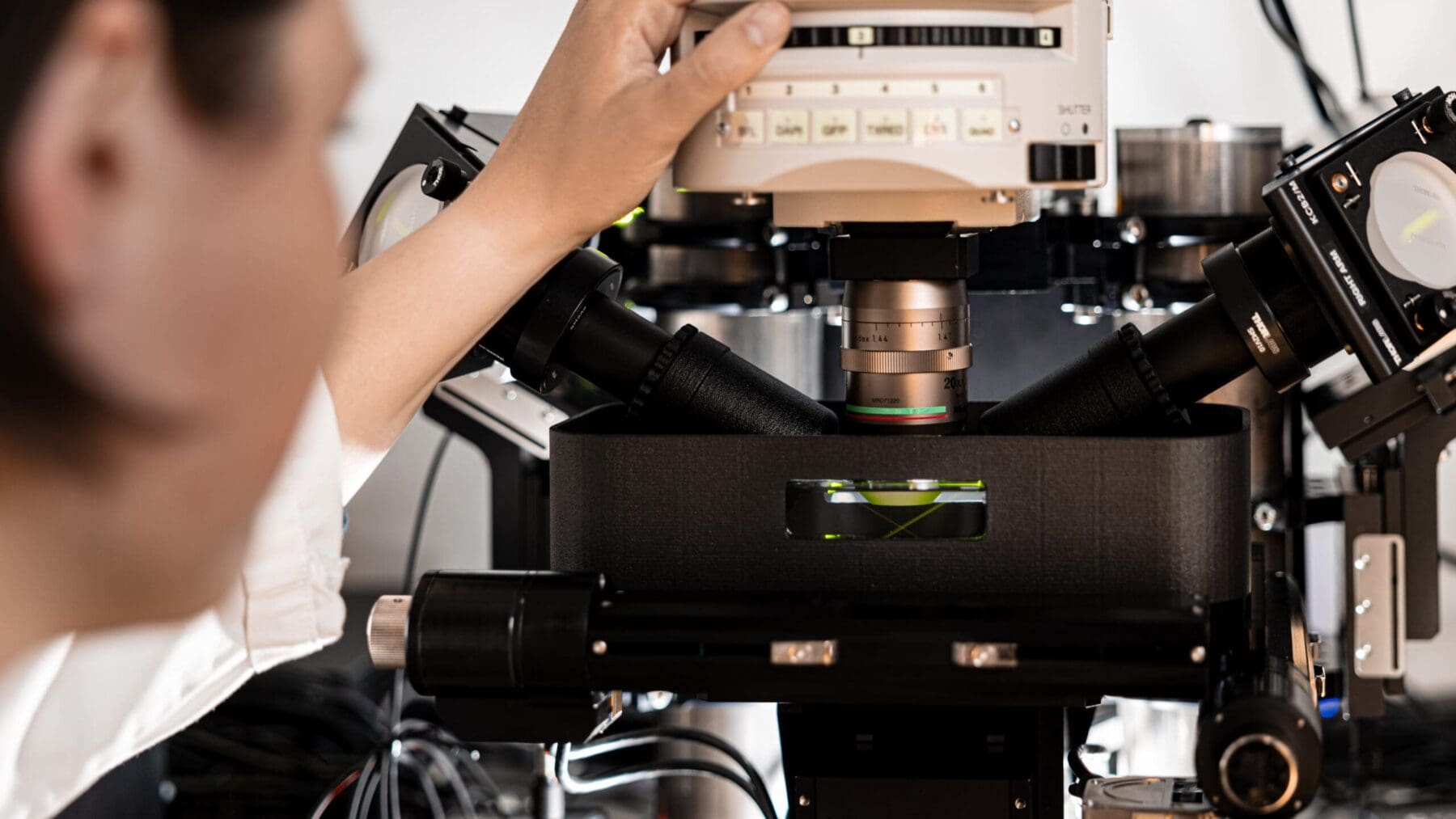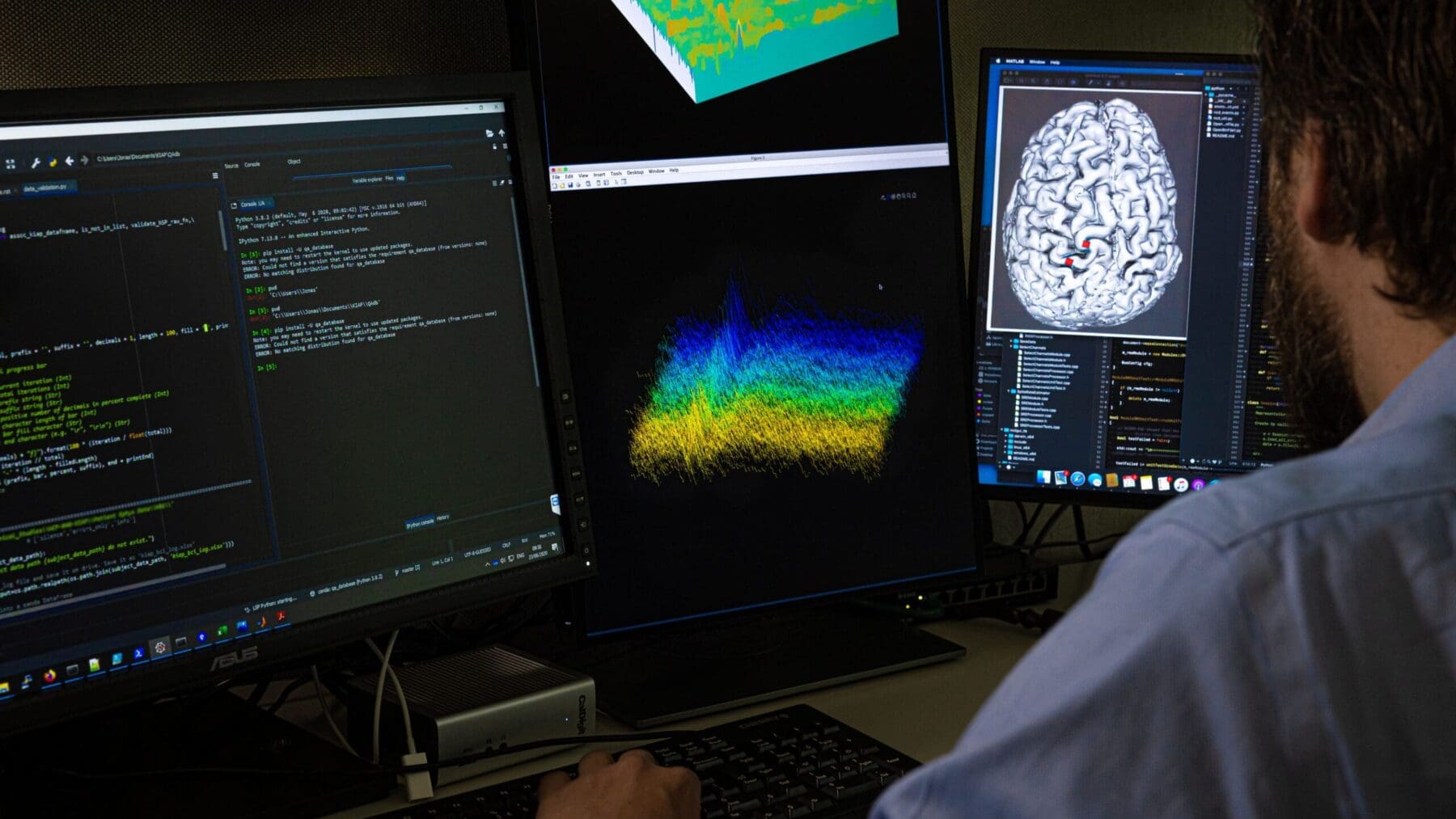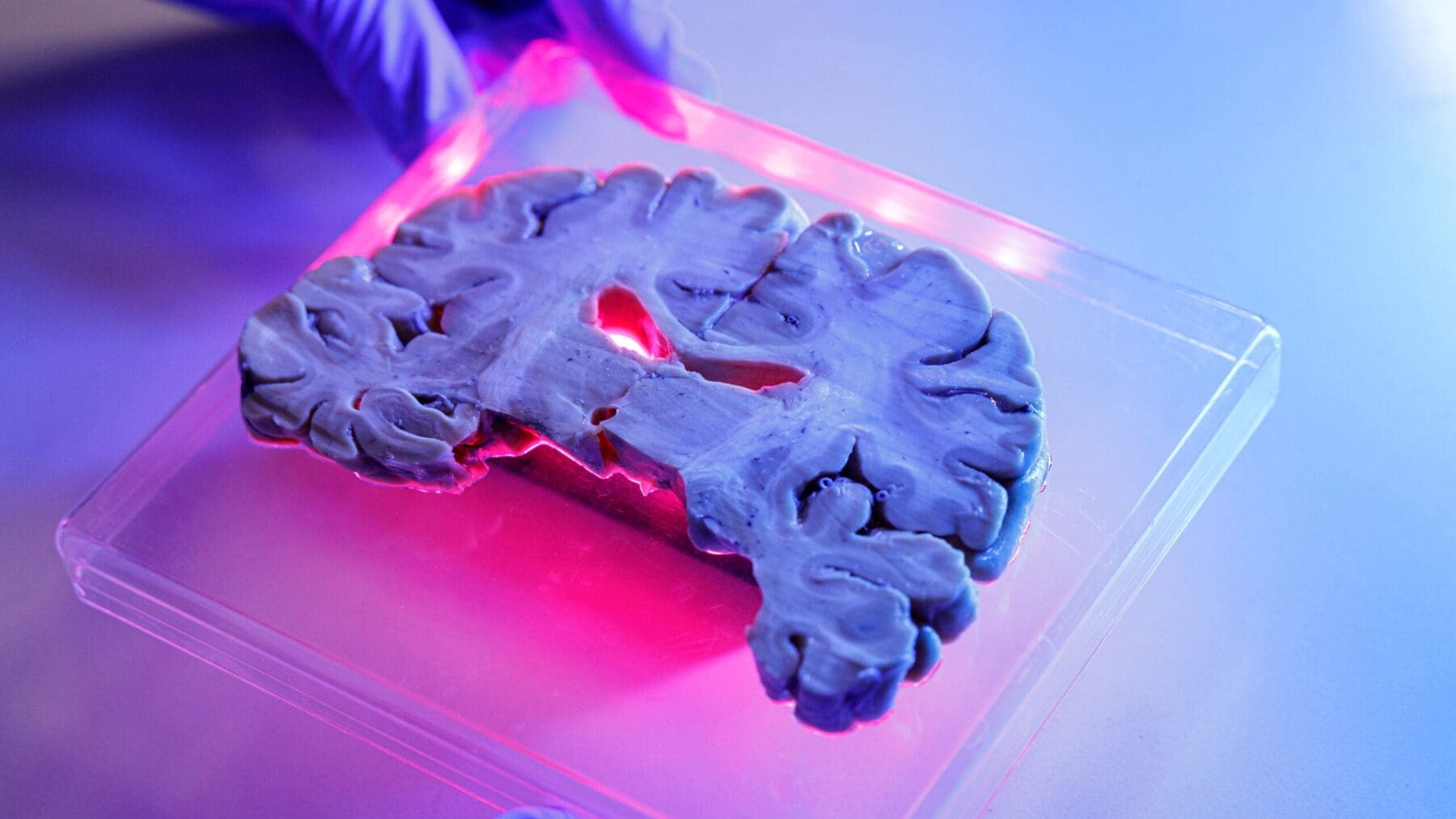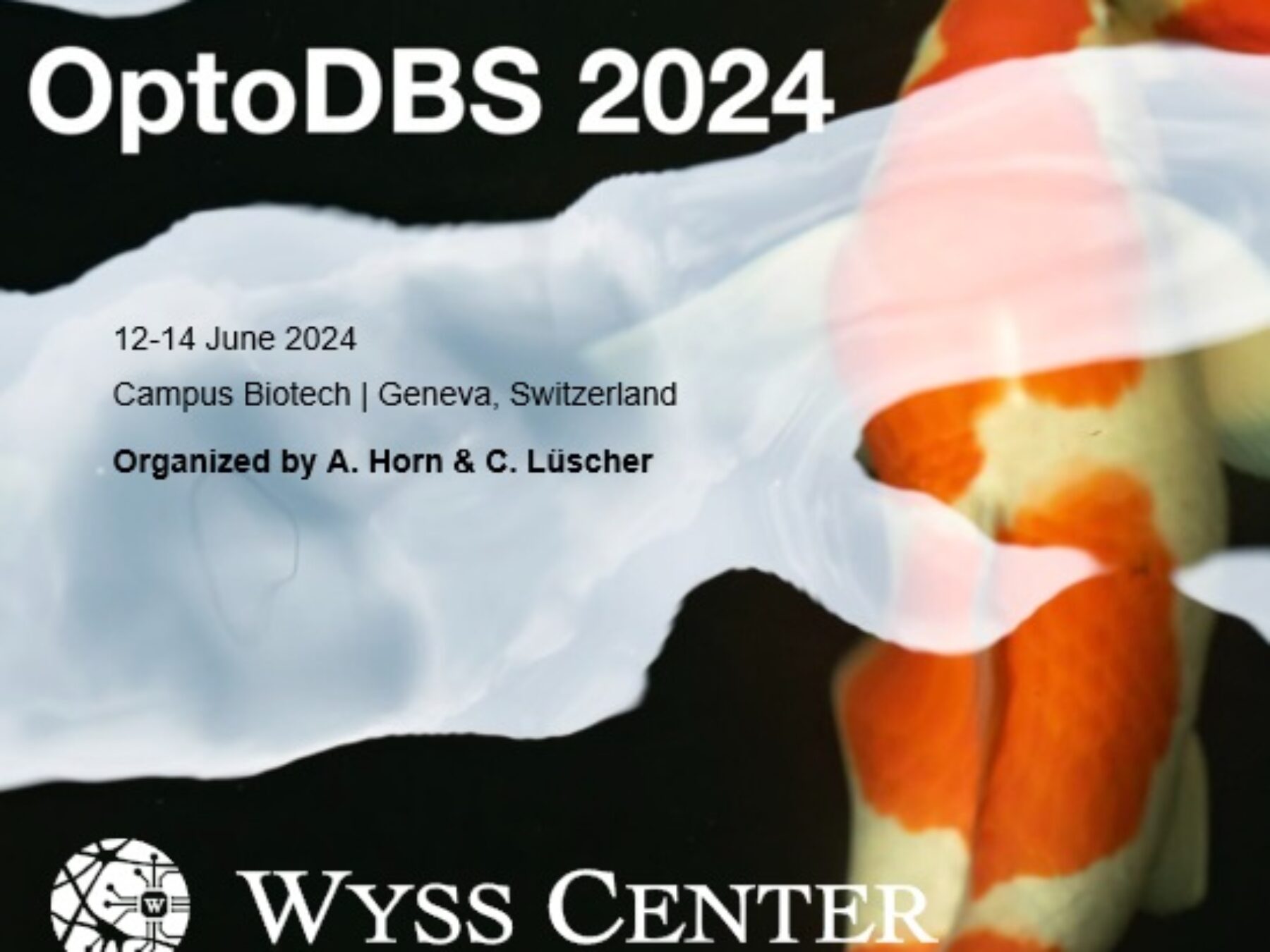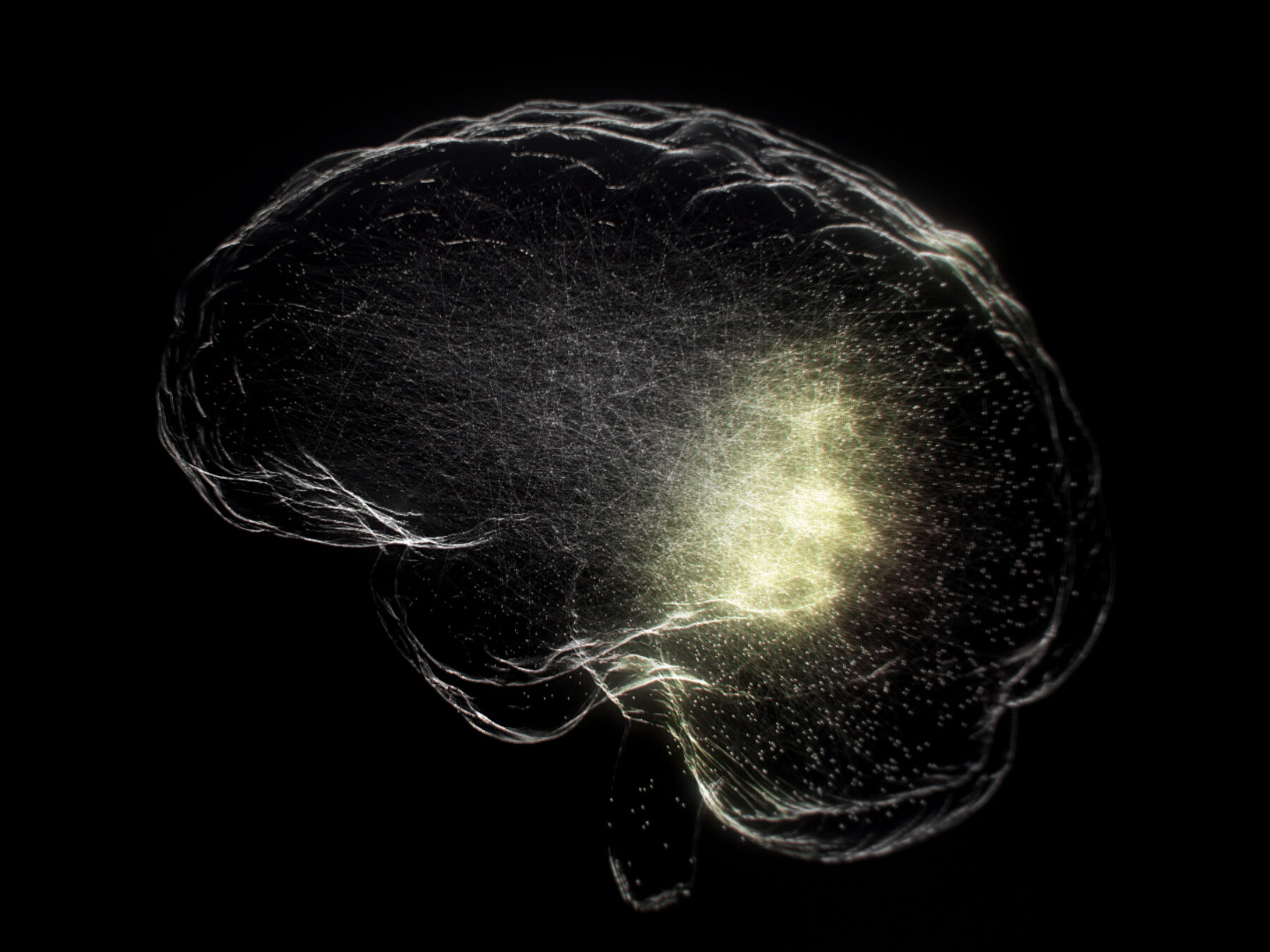16.11.2022
In conversation with Jules Scholler, PhD, Software Engineer in Bioimaging
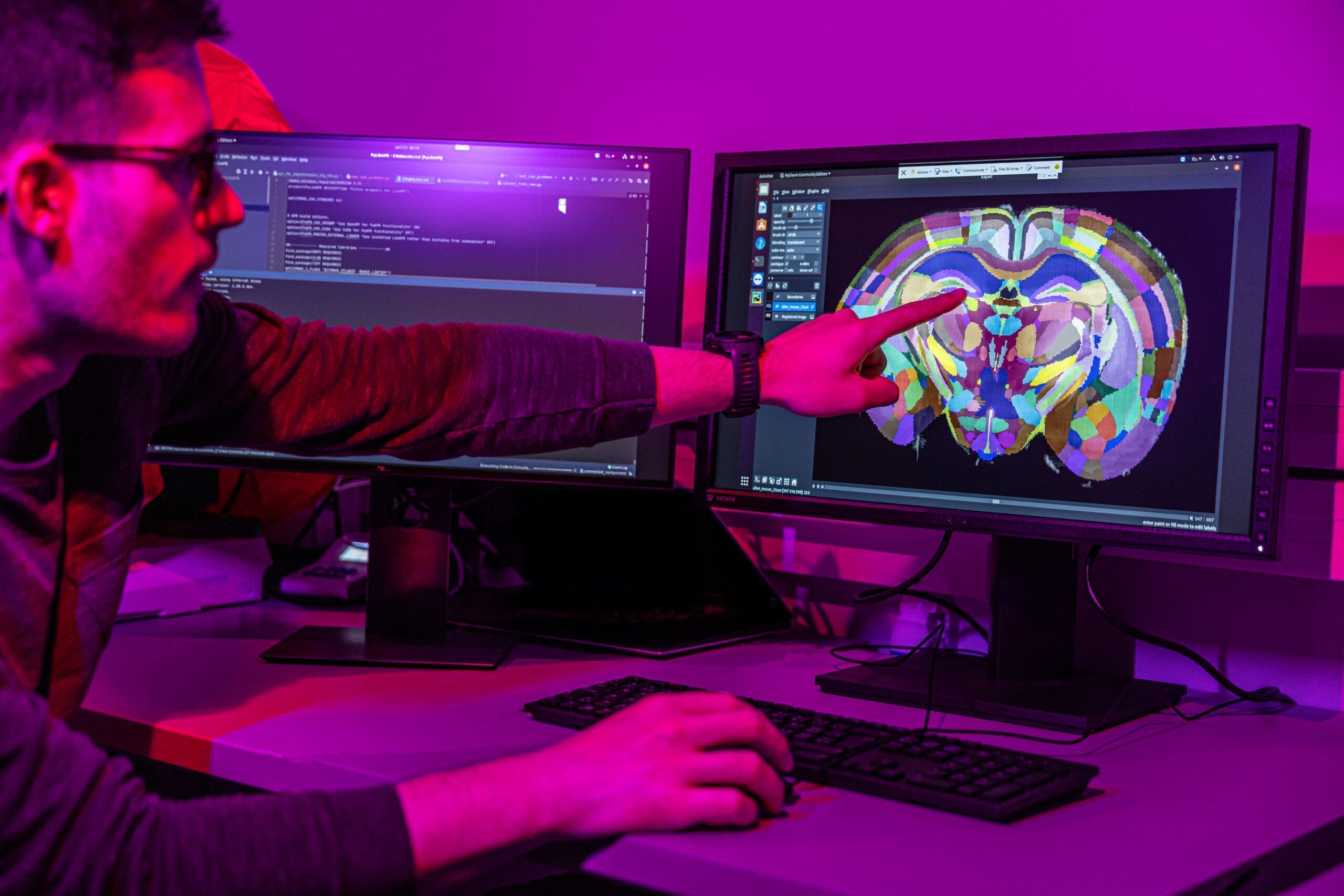
The ‘in conversation’ series features members of the Wyss Center community discussing their work, their collaborations and imagining the future.
Can you describe what you’re currently working on?
As a software engineer working in bioimaging, I mainly write software for microscopy image analysis. My goal is to leverage and develop new algorithms that will allow us to image the human brain at high resolution. I work closely with the Wyss Center’s microscopy and neurobiology teams who are exploring cellular and whole brain mechanisms in healthy and diseased brain tissue in the search for disease biomarkers.
What clinical problem does this solve?
We don’t know what causes brain disorders like dementia, and we are not diagnosing them early enough. By the time dementia is diagnosed, the brain is already damaged. Clinicians can treat the symptoms, but nothing can reverse the disease. If we could understand what is happening inside the brain, at the cellular level, it would help identify the mechanisms involved. We can then leverage this knowledge with our colleagues at the Center, in Switzerland and around the world and develop better diagnostic and therapeutic approaches and devices. Collaborating with clinicians is key in bringing new innovations to the patient and impacting people’s lives in a significant way.
What inspired you to work in bioimaging?
I always worked on imaging projects with a strong computer science component. I started with non-destructive control (ultrasound) which I enjoyed, but I wanted to work in a more applied field. I then switched to medtech (also ultrasound) and very much enjoyed working in an area that was developing technology to improve lives. For my PhD I decided to stay in medical applications but focus on a different technology – utilizing optics and interferometric imaging applied to the retina. When I joined the Wyss Center, I switched from the retina to the brain. I guess this was a logical next step in my career, as the retina is an extension of the brain – retinal cells are neurons!
Given your previous experience in vision research – do you anticipate any breakthroughs in the next ten years?
A large proportion of the population ends up blind (often from glaucoma). Recent advances in optogenetics – in which genetically modified light-sensitive cells in the retina of a blind person respond to pulses of light – have been shown to partially restore vision in patients. Improving this strategy – along with earlier detection of glaucoma, which is very tricky to diagnose and often happens too late – could lead to new therapies for blindness and would be a great advance in medicine.
What would it take to achieve such an advance?
In my opinion the biggest challenge is to kick-off these ambitious projects in the first place. Translational neuroscience projects involve many people with different specialties – including clinicians, mechanical engineers, electrical engineers, computer scientists, etc. The teams need research laboratories and resources to advance their research over fairly long timescales. We live in a world where results and return on investment are expected short term and subsequently where large-scale projects are harder to fund and develop. The other big challenge is to translate the research findings into real-world therapies. This requires business, legal and entrepreneurial input as well as investment. It’s exciting to be working in a place that supports ambitious neuroscience projects and where the advances have the potential to make a real impact on people’s lives.
What do you enjoy most about your work?
I love working at the boundary of biology, optics and computer science. Compared to other organs in the body, very little is known about the brain. With billions of neurons, the human brain is hugely complicated, but advances in optic technology are dramatically expanding our ability to visualize it in detail. Applying innovations in artificial intelligence and deep learning to make sense of the immense amount of data that we are collecting is a challenge that I find tremendously exciting.
If you had to choose a different career – what would you do?
I really enjoy brewing beer and learning more about biochemistry while doing it, so I might have become a professional brewer. In hindsight I am happy with my career choice since I can still brew in my spare time, whereas it would be nearly impossible to work on neuroscience projects in my spare time if I was a brewer!
